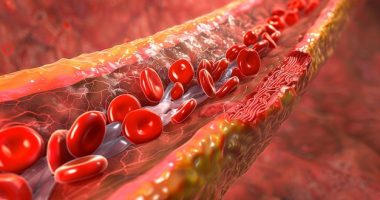In a groundbreaking study that holds promise for the future of sleep diagnostics, researchers have made significant strides in validating the use of suprasternal pressure (SSP) sensors to assess respiratory effort during sleep more accurately and less invasively. Historically, intra-esophageal pressure (Pes) measurement has been considered the gold-standard for quantifying respiratory effort; however, its clinical use is limited due to practical challenges. While respiratory inductance plethysmography (RIP) belts offer an easier, albeit imperfect, alternative, their effectiveness without calibration and limited perspective on true respiratory effort remains a concern.
The novel research led by a team including Luca Cerina, Gabriele B Papini, and Pedro Fonseca, aims to rigorously test the SSP sensors against RIP belts and Pes. In their study involving 207 participants during clinical polysomnographic evaluations, the team simultaneously recorded SSP and Pes data along with RIP belt readings to test the efficacy of SSP in detecting and evaluating respiratory patterns and events.
Their findings reveal that SSP not only matches but in some cases supersedes the efficiency of traditional Pes and RIP measurements. With an impressive correlation to Pes and accuracy in breath detection, the SSP sensors demonstrated a reliability that could simplify the way respiratory effort is monitored in sleep studies. This research could significantly alter the landscape of sleep medicine, providing a non-invasive, accurate, and simpler method for assessing respiratory effort and diagnosing sleep-related breathing disorders.
The research on suprasternal pressure (SSP) sensors comes as a welcome advancement in the field of sleep diagnostics, an area where precision and patient comfort are both paramount. To grasp the importance of this development, we need to consider the background against which this study was conducted and the existing methodologies for assessing respiratory effort during sleep.
Traditionally, intra-esophageal pressure (Pes) measurement has been the most accurate method for quantifying respiratory effort. It involves placing a small catheter with a pressure sensor into the esophagus, where it can measure pressure changes that reflect the respiratory muscle movements. Despite its accuracy, Pes is invasive and uncomfortable for the patient, which limits its utility in routine clinical practice. The intrusive nature of the procedure can also affect sleep architecture, potentially altering the very phenomena it aims to measure.
As an alternative, respiratory inductance plethysmography (RIP) belts are commonly used. These belts are placed around the chest and abdomen to measure the expansion and contraction associated with breathing. While far less invasive than Pes, RIP belts have their drawbacks. They require calibration to measure absolute effort accurately, and even with proper setup, they provide only an indirect measure of respiratory effort. This can lead to inaccuracies, particularly in differentiating between types of sleep-disordered breathing or in assessing the severity of a disorder.
The introduction of suprasternal pressure sensors marks potentially transformative progress in this area. Positioned at the suprasternal notch, these sensors are non-invasive and detect pressure changes caused by breathing effort transmitted through the tissues of the neck. This novel approach hopes to combine the non-invasiveness of RIP belts with accuracy closer to that of Pes.
The study by Luca Cerina, Gabriele B Papini, and Pedro Fonseca was comprehensive, involving a large participant sample which provides robust data. Their findings that SSP sensors not only correlate highly with Pes but also frequently surpass RIP belts in detecting respiratory events is promising. Such outcomes suggest that SSP technology could become the new standard for non-invasive respiratory monitoring in sleep studies, offering ease of use without sacrificing accuracy.
Moreover, the research is significant in addressing a broader spectrum of sleep-related breathing disorders, including sleep apnea, hypoventilation, and Cheyne-Stokes respiration, where precise measurement of respiratory effort is crucial for accurate diagnosis and effective management. The potential reduction in device-related discomfort could also lead to better patient compliance and more representative sleep data, ultimately enhancing diagnostic reliability and patient outcomes in sleep medicine.
In summary, the development and validation of SSP sensors signify a major step forward, potentially revolutionizing sleep diagnostics by providing a tool that is both patient-friendly and technically proficient.
The methodology used in the study by Luca Cerina, Gabriele B Papini, and Pedro Fonseca was rigorously designed to test the effectiveness of suprasternal pressure (SSP) sensors compared to traditional methods of respiratory effort measurement during sleep. This involved a comprehensive comparison against both intra-esophageal pressure (Pes) measurements and respiratory inductance plethysmography (RIP) belts, providing a robust framework to assess accuracy, reliability, and usability. Here’s a detailed breakdown of the methodology employed in the research:
**1. Participant Selection and Preparation:**
The research included 207 participants who were undergoing clinical polysomnographic evaluations. This diverse participant group ensured a wide range of respiratory patterns and provided a comprehensive data set reflective of various sleep conditions. Participants were prepared according to standard polysomnographic protocol, which included the placement of various sensors and monitoring devices to record sleep stages, heart rate, oxygen levels, and other physiological parameters.
**2. Sensor Setup and Data Collection:**
Each participant was equipped with the standard Pes catheter, which was inserted nasally and positioned in the esophagus to measure pressure changes directly related to respiratory effort. Concurrently, RIP belts were placed around the chest and abdomen to assess respiratory volume and effort indirectly by measuring the changes in thoracic and abdominal circumferences during breathing.
In addition to these established methods, SSP sensors, which were the primary focus of this study, were positioned at the suprasternal notch at the base of the neck. These sensors are designed to detect subtle pressure changes transmitted through the tissues of the neck during respiratory efforts. Data from all devices were simultaneously recorded throughout the sleep session.
**3. Data Analysis:**
The recorded data from SSP sensors, RIP belts, and Pes were subjected to a detailed comparative analysis. The main variables of interest were the accuracy of breath detection and the correlation of each method with Pes measurements (the gold standard). Advanced statistical techniques, including correlation coefficients, Bland-Altman plots, and sensitivity-specificity analysis, were employed to compare the performance of SSP sensors against RIP belts and Pes.
**4. Validation and Calibration:**
To ensure that the SSP sensors provided data that were not only comparable but possibly superior to Pes and RIP, a calibration phase was included. The SSP sensor data were calibrated against the Pes measurements for initial validation. This calibration helped in refining the sensor detection algorithms to improve accuracy and reliability.
**5. Ethical Considerations:**
The study protocols, including the use of invasive Pes, were reviewed and approved by an ethical committee. Participants were provided with detailed information about the procedures and potential discomfort associated with the Pes, and informed consent was obtained prior to participation.
**6. Data Interpretation and Reporting:**
The results were interpreted based on the comparative efficacy of SSP sensors in terms of accuracy, ease of use, and patient comfort. These findings were then carefully reported, considering the implications for clinical practice and future research in sleep studies.
By employing this robust methodology, the researchers were able to not only test the efficacy of SSP sensors but also provide evidence that may help shift clinical practices towards more patient-friendly, non-invasive methods of monitoring respiratory effort during sleep. This could potentially improve patient compliance, comfort, and the overall accuracy of sleep-related breathing disorder diagnoses.
The outcomes of the research conducted by Luca Cerina, Gabriele B Papini, and Pedro Fonseca yielded several key findings that underline the potential efficacy and advantages of suprasternal pressure (SSP) sensors in assessing respiratory effort during sleep. These results are supportive of SSP sensors as a promising alternative to both intra-esophageal pressure measurements (Pes) and respiratory inductance plethysmography (RIP) belts, offering the possibility of revolutionizing sleep diagnostics. Here’s a detailed breakdown of the primary findings and their implications:
**1. High Correlation with Pes:**
One of the most significant findings from this study is the high correlation of SSP sensor readings with Pes measurements. The SSP sensors effectively detected the subtle pressure changes associated with breathing efforts, which closely matched the direct measurements obtained from the Pes device inserted into the esophagus. This strong correlation suggests that SSP sensors can reliably measure respiratory effort with an accuracy that approaches the current gold standard, but without the invasiveness associated with Pes.
**2. Superior Performance Over RIP Belts:**
The study also demonstrated that SSP sensors frequently outperformed RIP belts in terms of detecting specific respiratory events. Unlike RIP belts, which require calibration and only provide indirect measurements through changes in thoracic and abdominal circumferences, SSP sensors directly assess pressure changes at the suprasternal notch. This direct measurement allows for a more precise detection of respiratory events, potentially leading to more accurate diagnoses of sleep-related breathing disorders.
**3. Improved Detection of Respiratory Events:**
SSP sensors were notably effective in identifying various types of respiratory events, including apneas, hypopneas, and irregular breathing patterns. Their ability to accurately detect these events surpasses that of RIP belts and closely mirrors the detection capabilities of Pes. This is particularly crucial for diagnosing and managing conditions like sleep apnea, where accurate recognition and differentiation of breathing disruptions are essential for appropriate treatment planning.
**4. Non-invasiveness and Comfort:**
A crucial advantage of SSP sensors highlighted by this study is their non-invasive nature. Since the sensors are simply placed at the base of the neck, the discomfort associated with the nasal insertion and esophageal positioning of the Pes catheter is entirely eliminated. This aspect of SSP sensors greatly enhances patient comfort and reduces the likelihood of disrupting natural sleep patterns, potentially leading to more accurate and representative sleep study results.
**5. Potential for Broader Clinical Application:**
The findings suggest that SSP sensors could be readily integrated into regular clinical practice, providing a simpler and more patient-friendly method for monitoring respiratory effort during sleep studies. The ease of use, combined with high accuracy, positions SSP sensors as an attractive alternative for widespread clinical adoption, potentially reducing the reliance on more invasive techniques.
**6. Implications for Future Research and Development:**
The successful validation of SSP sensors in this study opens avenues for further research, particularly in refining the technology to enhance its sensitivity and specificity even further. Additionally, future studies could focus on the application of SSP sensors in home-based sleep studies, expanding their utility in various settings outside of the clinical environment.
In conclusion, the comprehensive research conducted on suprasternal pressure sensors not only confirms their potential as a groundbreaking tool in sleep diagnostics but also highlights their capacity to improve patient comfort, enhance diagnostic accuracy, and simplify the monitoring process in sleep studies. These findings advocate for a shift towards more innovative, non-invasive methods in the field of sleep medicine, promising significant improvements in the diagnosis and management of sleep disorders.
The compelling findings from the study on suprasternal pressure (SSP) sensors conducted by Luca Cerina, Gabriele B Papini, and Pedro Fonseca mark a seminal advancement in the field of sleep diagnostics. Their research not only validates the efficacy of SSP sensors against traditional methods like intra-esophageal pressure (Pes) measurements and respiratory inductance plethysmography (RIP) belts but also highlights the potential for these sensors to redefine patient care in sleep studies through their non-invasive nature and high accuracy.
### Future Directions
The promising results of this study pave the way for several future research and development opportunities:
1. **Technology Enhancement:** Further technological refinement and enhancement of SSP sensors could improve their sensitivity and specificity. This includes leveraging machine learning algorithms to better interpret the data captured by these sensors, potentially offering even more precise diagnostics capabilities.
2. **Extended Clinical Trials:** Larger and more diverse clinical trials across different demographics and geographic locations could help in understanding the broader applicability of SSP sensors. Such studies could evaluate the performance of SSP sensors in varied clinical settings, including their use in pediatric and elderly populations who might particularly benefit from non-invasive diagnostics.
3. **Home-Based Sleep Studies:** Exploring the use of SSP sensors in home-based settings could be revolutionary. The convenience and comfort of home might encourage more individuals to participate in sleep studies, potentially leading to earlier diagnosis and treatment of sleep disorders.
4. **Integration with Other Technologies:** Combining SSP sensors with other diagnostic tools and technologies, such as smartwatches and fitness trackers that monitor sleep, could provide a more holistic view of a patient’s sleep health. This integration could facilitate continuous, real-time monitoring of sleep quality and respiratory effort.
5. **Cost-Effectiveness Analysis:** Analyzing the cost-effectiveness of implementing SSP sensors in clinical practice compared to traditional methods could further support their adoption. Reduced costs from the elimination of need for calibrations and decreased procedural invasiveness might make SSP sensors a more attractive option for healthcare providers.
### Final Thoughts
The introduction and validation of SSP sensors signify a critical shift towards more patient-centered approaches in sleep medicine. This technology embodies the dual aims of increasing diagnostic accuracy while enhancing patient comfort, potentially leading to broader acceptance and application in clinical settings. What’s striking about SSP sensors is not just their potential to replace more invasive techniques but their capability to create new pathways for diagnosis and monitoring that were previously constrained by the limitations of existing technologies.
The future of sleep diagnostics seems poised on the cusp of a transformation, where advancements like SSP sensors could become the cornerstone of sleep-related breathing disorder assessments. This evolution in diagnostics method could lead to better patient outcomes, more precise treatments, and an overall improvement in the quality of life for those suffering from sleep disorders. As this technology progresses, it holds the promise of making sleep studies more accessible and less burdensome, thus reflecting an overarching trend in medicine towards less invasive yet more efficient patient care. The journey from a research breakthrough to everyday clinical practice might be gradual, but the path charted by this innovative study is undeniably forward-moving, leading towards a future where sleep diagnostics are as easy as a good night’s sleep.








